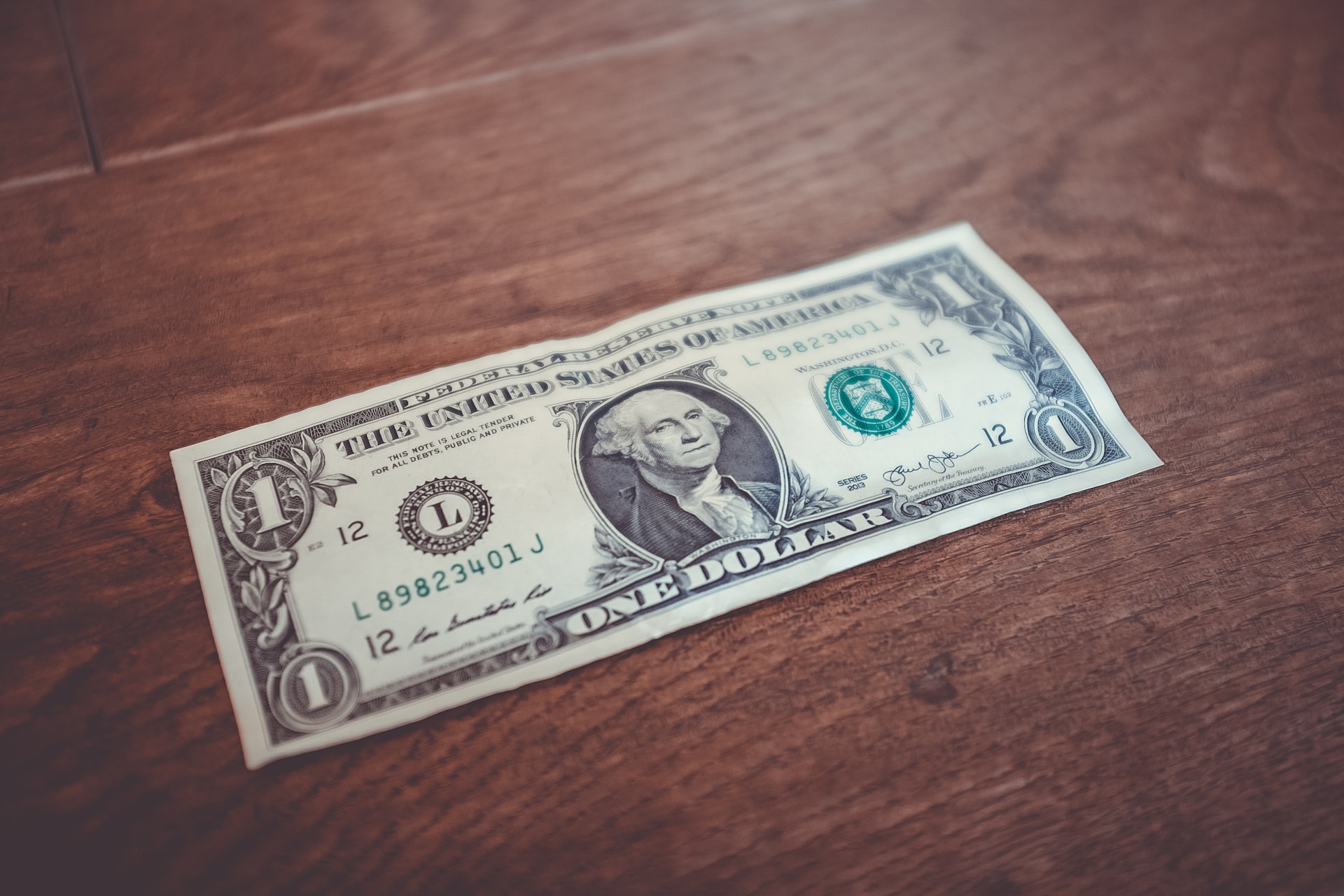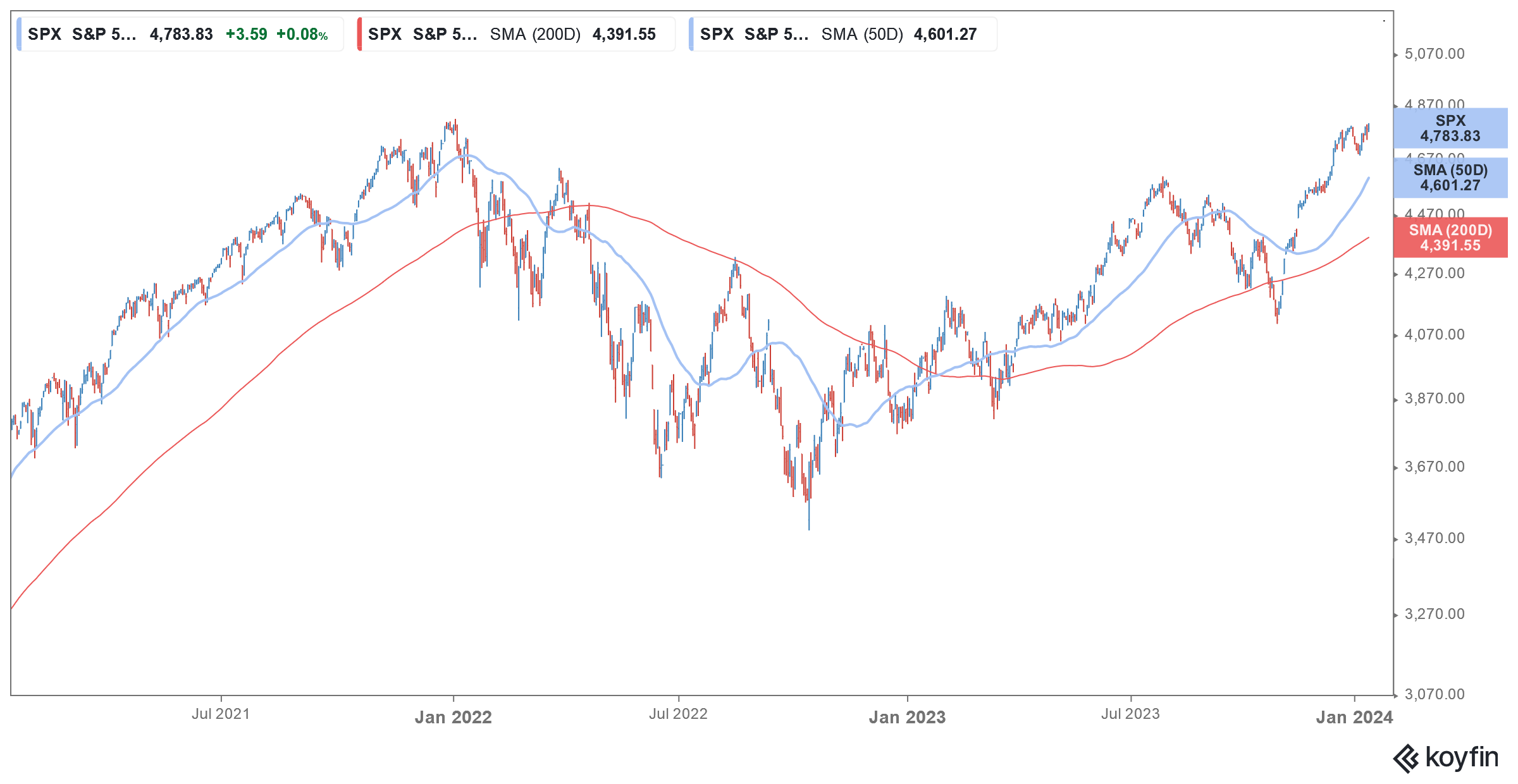
While many economists feared a US recession in 2023, the world’s largest economy surprised with its resilience last year. A Wall Street Journal survey shows that business and academic economists see a 39% probability of a US recession in 2024, down from 48% in October.
However, economists expect the US economy to expand by only 1% in the year as compared to the expected growth of 2.6% last year. The projected growth is the worst since 2020 when the US economy contracted amid the COVID-19 lockdowns. Also, it is around half of the long-term growth rate of the US economy.
Economists lower recession odds
According to Bill Adams, chief economist at Comerica Bank, “A recession in the year ahead seems less likely than it appeared at the start of 2023, since interest rates are trending lower, gas prices are down from last year, and incomes are growing faster than inflation.”
Meanwhile, the expected slowdown in growth in 2024 is not surprising and the Fed also expects the economy to slow down in the coming quarters.
The minutes of the Fed’s December meeting said, “Available indicators suggested that real GDP growth was slowing from its strong third-quarter pace, which had been led by a sizable increase in consumer spending.”
They added, “Real GDP was projected to increase more slowly than the staff’s estimate of potential over the next two years before rising in line with potential in 2026.”
The Fed’s rate hikes are among the reasons US GDP growth is slowing down. The December meeting minutes said, “Several participants remarked that the Committee’s past policy actions were having their intended effect of helping to slow the growth of aggregate demand and cool labor market conditions”
Fed’s rate hikes
The Fed has been on a rate-hiking spree since March 2022. It raised rates by 25 basis points in March 2022 and by 50 basis points in May. In the next four meetings, it raised rates by 75 basis points each before lowering the pace of hikes to 50 basis points in December.
The US central bank raised rates four times in 2023 by 25 basis points each. Currently, the Fed fund rates are 5.25%-5.50% which is the highest since 2001. Amid the Fed’s rate hikes, the yields on the 10-year Treasury spiked to 5% last year for the first time since 2007. The yields have since fallen below 4%.
The Fed’s December dot plot called for a cumulative rate cut of 75 basis points in 2024 but most economists believe that the US Central Bank might need to cut rates faster to fend off a recession.
Economists on Fed rate cut probability
Only 19% of economists surveyed in the Wall Street Journal survey believe that the Fed would cut rates at its March meeting. Less than a third of the respondents see a rate cut at Fed’s April 30-May 1 meeting, and the odds rise to just over a third for the June FOMC meeting.
Here it is worth noting that the survey was conducted between January 5 to January 9 which was below the release of the December CPI data which showed prices rose 0.3% month-on-month. The reading was firmer than expected and led to a crash in US shares, especially the rate-sensitive names like growth shares.
Yield curve inversion and recession
The US yield curve inverted on July 5, 2022, and has since been inverted. The inversion, which basically means the yields of the 2-year Treasury rising above the 10-year Treasury, has been a reliable indicator of past recessions.
In fact, the length of current inversion is the highest since 1979 when the curve was inverted for a record 89 weeks.
We have seen some “de-inversion” of the yield curve and the spreads narrowed to a two-month low earlier this month. The market is however divided on what it means for a possible recession.
According to “bond guru” Jeffrey Gundlach, “The curve de-inverting is highly suggestive of a recession. And I think the dollar is going to have big problems in the next recession, as a consequence of the policies that we run to try to deal with what could be a very painful recession.”
Gundlach warned that the S&P 500, which rose an impressive 24% last year is forming a double top. “We’re not really the world beater any longer and that might have something to do with all of our mismanagement, or our fiscal situation and the crazy policies that we’ve been putting in place in more recent years,” said the DoubleLine Capital CEO.
De-inversion does not necessarily mean a recession
Meanwhile, not all agree that the de-inversion necessarily means a recession and Lawrence Gillum, chief fixed-income strategist for LPL Financial said, “It’s more about the immaculate disinflation story that continues to play out and inflation getting back to 2% quicker than expected”
Gillum added, “The narrative that disinversion means recession because the Fed is going to start cutting rates is not what’s playing out. The idea is that the Fed is going to start cutting, regardless of a recession, as inflation comes down.”
All said expectations of a soft landing of the US economy helped support the rally in US shares in 2023. US shares have looked vulnerable so far in 2024 and are still in the red. Most brokerages are cautious about the market outlook for 2024 and even some of the bulls expect returns to be in single digits at best.


Question & Answers (0)